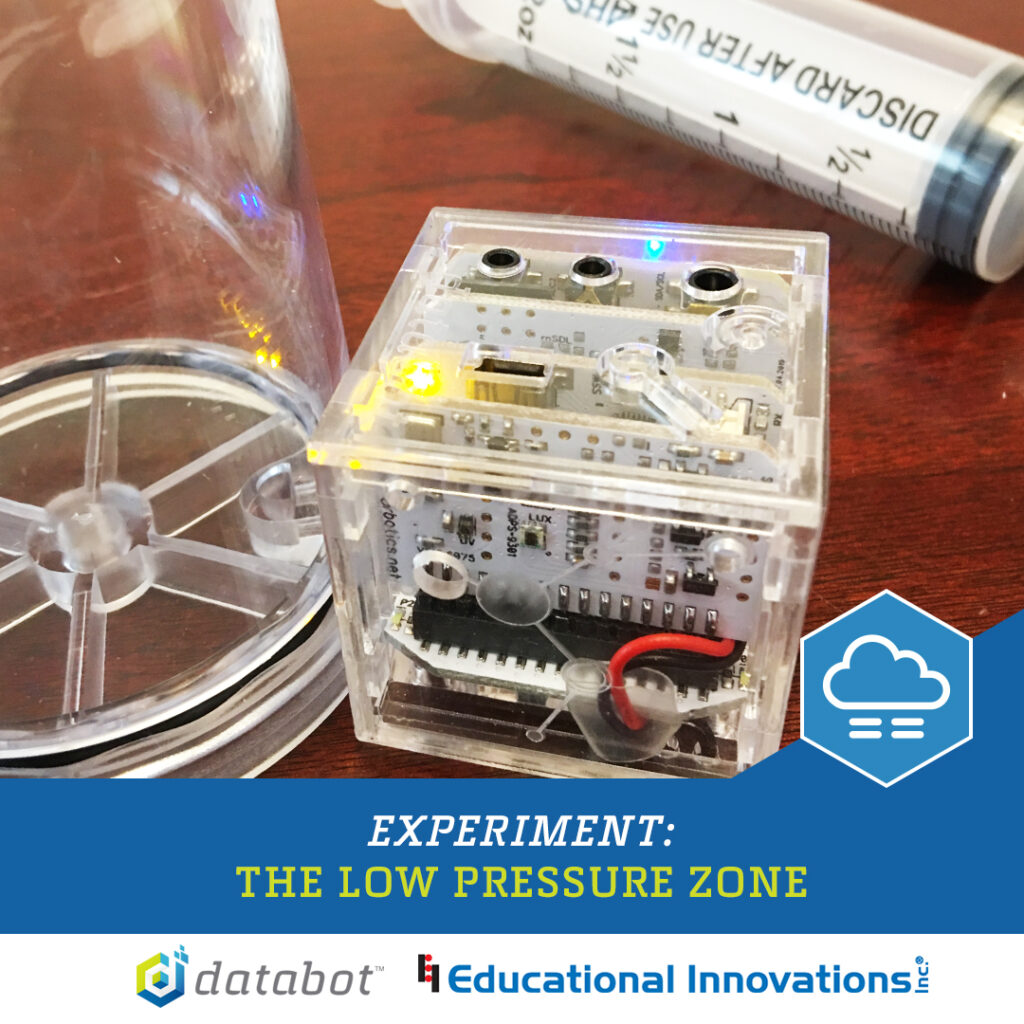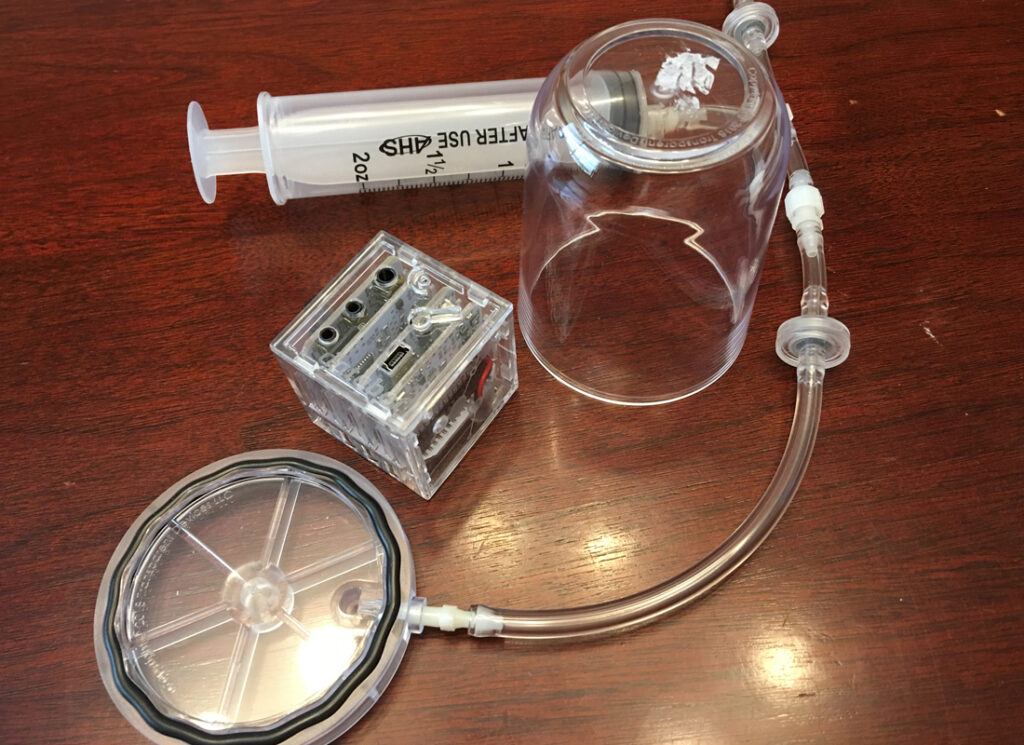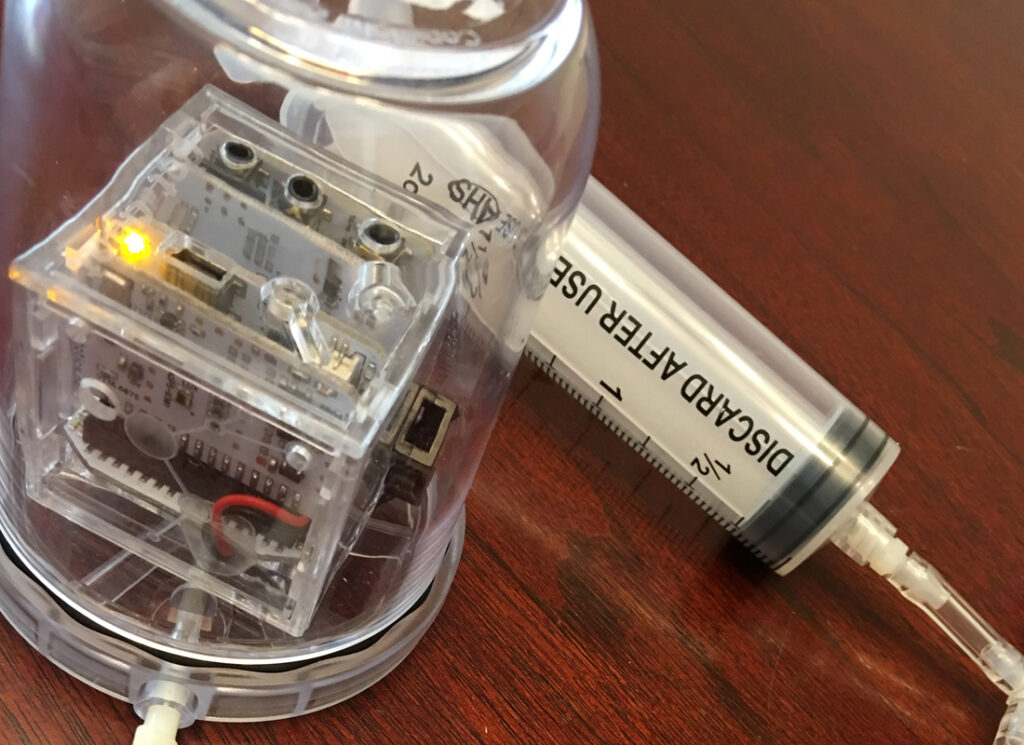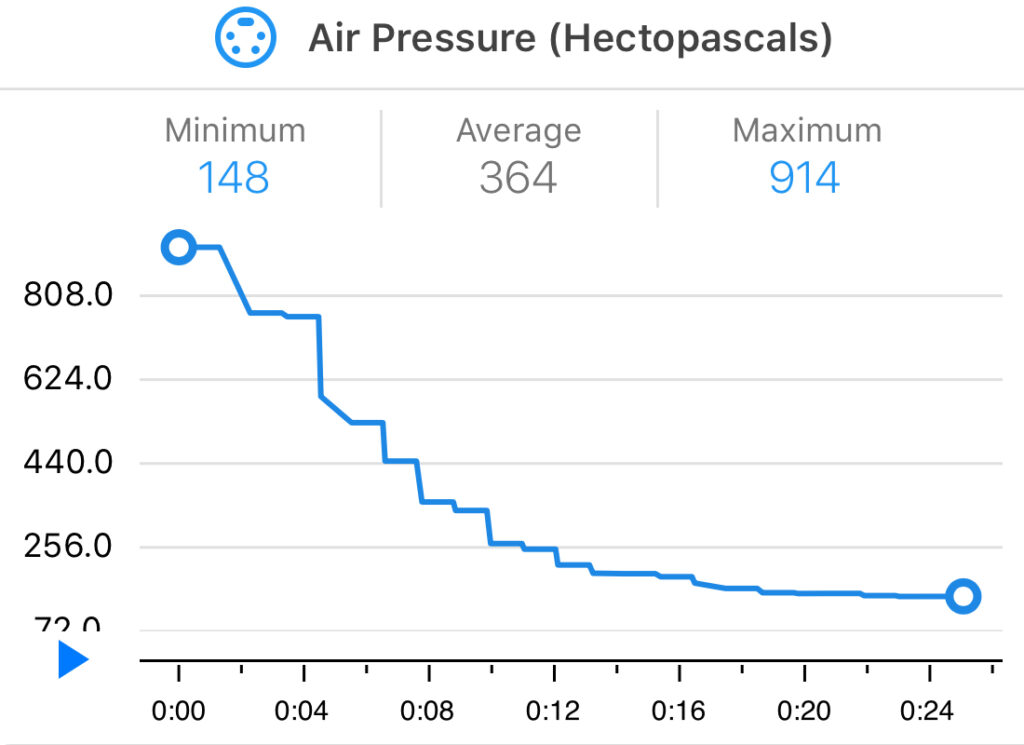By Robert Grover
databot™ has been making friends all over the world since arriving in June 2019. One fun group of friends we have come to know this summer are the science-loving educators at Educational Innovations.
As you may already know, databot™ is a fearless explorer of scientific frontiers. After getting to know some of the people at Educational Innovations, it became quickly apparent that they were interested in doing some first-hand exploration using databot’s™ onboard sensor system.
The first idea to roll out of their warehouse full of science fun was their “Microscale Vacuum Apparatus” —a remarkably well-built kit that enables students to perform hands-on experiments with air pressure. Coincidentally, the apparatus fit databot™ like a glove! We were able to place the databot™ inside the vacuum chamber and watch the data as the air was drawn out.
Check out the pictures of the apparatus, databot™ bravely entering the chamber, and the subsequent data collected on the pressure reduction!
Note: we used an awesome software called Google Science Journal to collect the data. It’s free, friendly, and fun!
Setting Up the Apparatus
databot™ Enters the Chamber
The Results from Databot™!
This is how it sounds in the container:
And here are the results!






